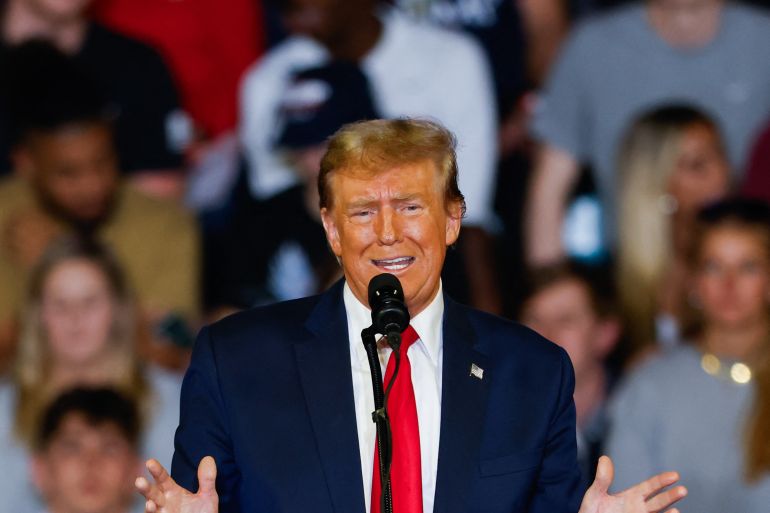Trump’s Russia threat against NATO: What US allies are spending on defense
The former president has repeatedly said the US is unfairly carrying the financial burden of the security alliance.

Speaking at a campaign rally on Saturday in South Carolina, the Republican Party’s presidential frontrunner said he told an unnamed leader of a “big country” that is part of NATO that he would “encourage them [Russia] to do whatever the hell they want” with nations that don’t spend sufficiently on defense.
KEEP READING
list of 2 itemsWhite House condemns Trump’s ‘unhinged’ NATO comments
Stoltenberg criticises Trump’s NATO comments
- Under Article 5 of the treaty that created the North Atlantic Treaty Organization, an attack on one member prompts a response from all.
How much are NATO members spending on defense?
- To boost funding, members agreed at a 2014 summit in Wales to contribute at least 2 percent of their GDPs to the alliance by 2024.
- Trump’s argument since then has been that the US needs to pressure allies to expand their military budgets.
By 2022, the number of NATO nations meeting that bar had reached eight — the US, UK, Greece, Poland, Latvia, Lithuania, Estonia and Croatia.
Sign up for Al Jazeera
Weekly Newsletter
Then, as the war in Ukraine continued and fears over Russia’s expansionist ambitions mounted, more European members increased their military budgets. The number rose to 11 in 2023 with Hungary, Romania, Slovakia and new NATO entrant Finland all spending more than 2 percent while Croatia tipped under the threshold.
Luxembourg (0.7 percent) spends the least in relation to its GDP. Belgium (1.1 percent), Turkey (1.3 percent), Spain (1.3 percent), Slovenia (1.4 percent) and Canada (1.4 percent) are other member nations at the bottom of the spending pile.
- Yet even as more NATO members have increased their spending, the alliance’s dependence on the size and strength of the US military has only grown.
The US, whose military forms the core of the alliance, has consistently spent more than all other members combined. In 1990, the US accounted for 61 percent of the alliance’s defenSe spending. By 2020, the US share had increased to 70 percent.
How has the Ukraine war affected NATO spending?
In December, the alliance announced a 2.03-billion-euro ($2.4bn) military budget for 2024, a 12 percent increase from 2023.
According to the White House, the US has provided wartime Ukraine with more financial aid than any other country, amounting to $44bn since 2022.
Experts said NATO is still falling short of its target on individual member’s military spending and the budgets of Western European countries farther away from Russia, like Germany, have been some of the slowest to rise.
From 2021 to 2023, Berlin increased its spending as a percentage of GDP by 0.1 percent. Ukraine’s neighbour Poland, on the other hand, has almost doubled its spending during that time.. .


No comments:
Post a Comment